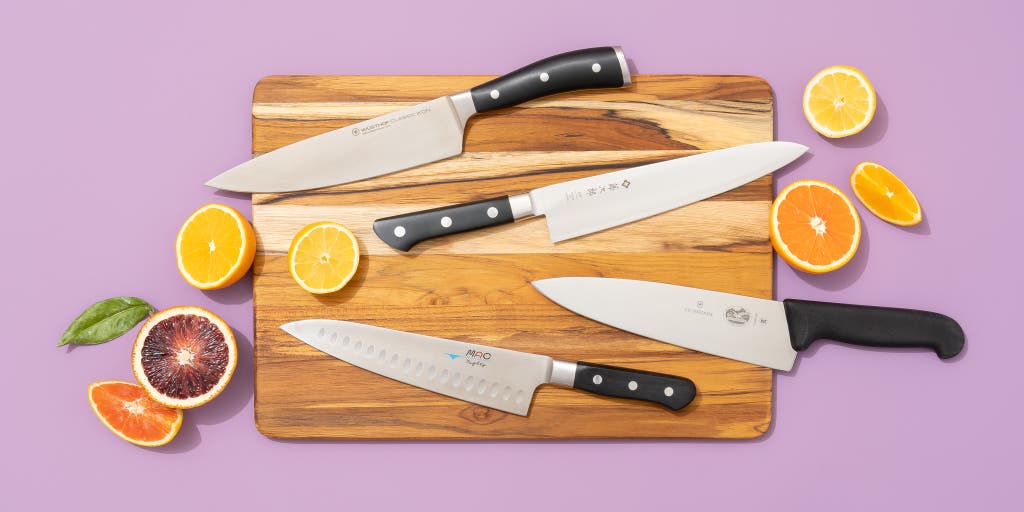Choosing the right chef knife is crucial for any kitchen enthusiast. A good chef knife can make a tremendous difference in your cooking experience. Whether you are a home cook or a professional chef, knowing how to choose a chef knife that fits your needs will enhance your kitchen performance.

Why the Chef Knife is a Big Deal?
The chef knife is the most versatile tool in any kitchen. This tremendous tool can handle anything from chopping veggies to slicing meat. The technology behind chef knives has evolved, making it easier and more enjoyable for us to prepare daily meals.More info

Understanding Knife Anatomy
Before delving into how to choose a chef knife, you need to understand its basic parts:
The Blade
The blade is the most crucial part. It can be made from various materials, including stainless steel, high-carbon steel, and ceramic.
The Handle
The handle should provide a firm grip and be comfortable to use over extended periods.
The Spine
The spine, or back of the blade, adds balance and weight to the knife.

Material Matters
Choosing the right material is vital. Stainless steel is resistant to rust and stains, while high-carbon steel is incredibly sharp and durable. Ceramic blades are lightweight and stay sharper longer but are more brittle.Read more

Handle Material
The handle material affects your comfort and safety. Common materials include wood, plastic, and composite. Wooden handles provide a classic look, while plastic and composite handles offer durability and easier maintenance.
Knife Balance
Balance is crucial for efficiency and safety. A well-balanced knife will feel comfortable and stable in your hand, reducing fatigue and risk of injury.
Size and Weight
The size and weight of the knife are also important. A standard chef knife blade ranges between 8-10 inches. The weight should feel substantial enough to cut through food easily but not so heavy that it tires your hand.
Blade Shape
Different blade shapes suit different tasks. A broad, flat blade is suitable for chopping, while a narrower blade works better for slicing and dicing.
Evaluating Edge Types
Two main edge types to consider are the straight edge and the serrated edge. A straight edge offers clean cuts and is easier to sharpen, while a serrated edge is good for tougher skins and crusts.
Brand Reputation
Choosing a reputable brand guarantees quality and durability. Brands like Wusthof, Shun, and Victorinox are well-regarded in the culinary world.Details here
Price Range
Chef knives come in a wide range of prices. It’s essential to find a knife that offers good value for its price. Often, investing a little more will ensure you get a tool that lasts for years.
Testing the Knife
Before making a final decision, try handling the knife in a store. Make sure it feels comfortable and balanced in your hand.
Maintenance
Proper maintenance extends the life of your chef knife. Regular sharpening and careful cleaning are essential. Use a sharpening stone or professional services if needed.Learn more
Storage Solutions
Storing your chef knife correctly will preserve its edge and prevent accidents. Consider using a knife block, magnetic strip, or blade guard.
Safety Tips
Always handle your chef knife with care. Keep your fingers away from the blade, use a cutting board, and never try to catch a falling knife.
Environmental Impact
Consider the environmental impact of your choice. Opt for knives made from sustainable materials and those that support ethical manufacturing practices.External link
Frequent Asked Questions
Which material is best for a chef knife blade?
High-carbon stainless steel is generally the best due to its durability and sharpness.
How do I know if a chef knife is well-balanced?
A well-balanced knife will feel stable and comfortable in your hand, without tipping forward or backward.
How often should I sharpen my chef knife?
This depends on usage, but generally, a chef knife should be sharpened every few months to maintain its edge.
As an Amazon Associate, I earn from qualifying purchases.
As an Amazon Associate, I earn from qualifying purchases.

